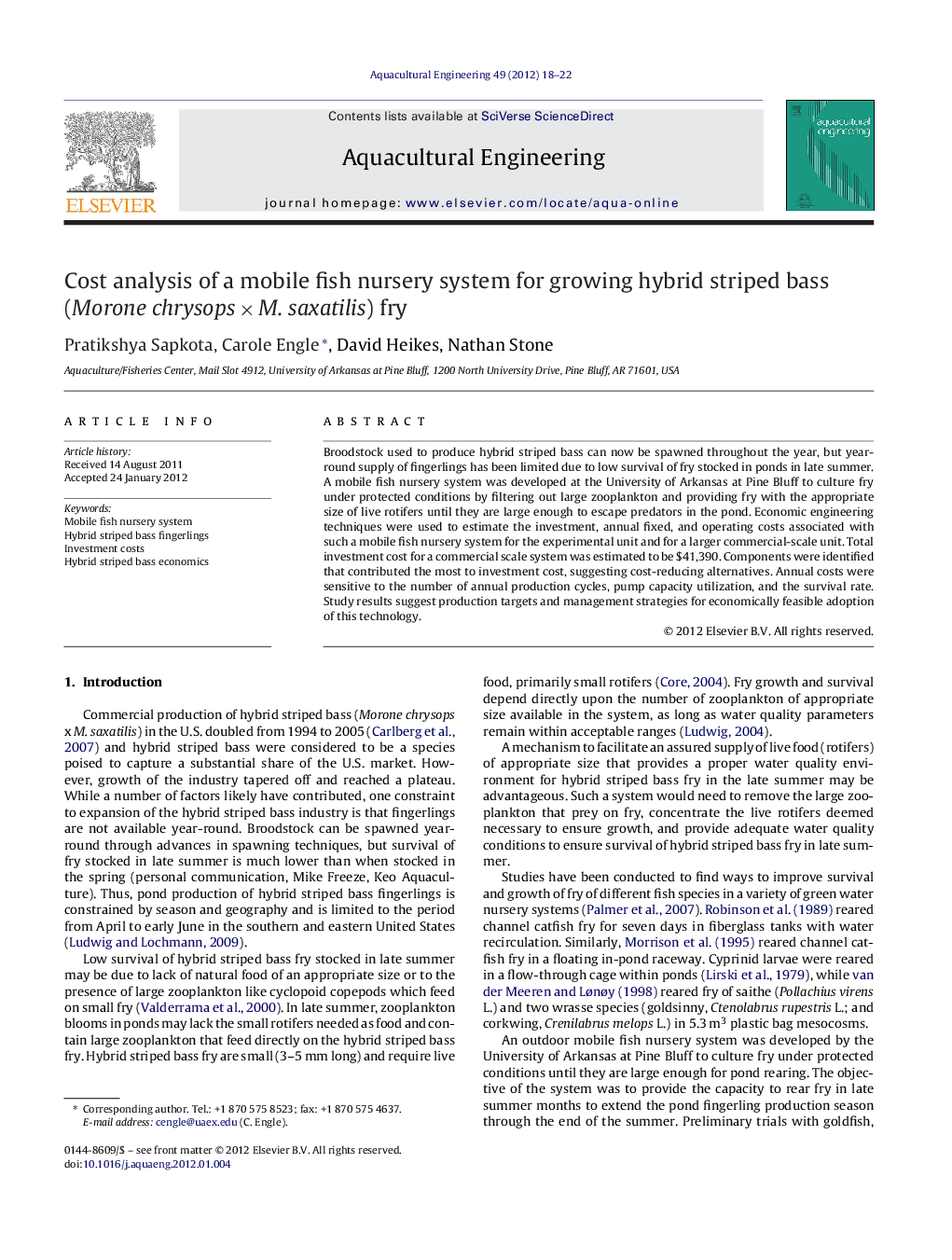| Article ID | Journal | Published Year | Pages | File Type |
|---|---|---|---|---|
| 4527274 | Aquacultural Engineering | 2012 | 5 Pages |
Broodstock used to produce hybrid striped bass can now be spawned throughout the year, but year-round supply of fingerlings has been limited due to low survival of fry stocked in ponds in late summer. A mobile fish nursery system was developed at the University of Arkansas at Pine Bluff to culture fry under protected conditions by filtering out large zooplankton and providing fry with the appropriate size of live rotifers until they are large enough to escape predators in the pond. Economic engineering techniques were used to estimate the investment, annual fixed, and operating costs associated with such a mobile fish nursery system for the experimental unit and for a larger commercial-scale unit. Total investment cost for a commercial scale system was estimated to be $41,390. Components were identified that contributed the most to investment cost, suggesting cost-reducing alternatives. Annual costs were sensitive to the number of annual production cycles, pump capacity utilization, and the survival rate. Study results suggest production targets and management strategies for economically feasible adoption of this technology.
► Investment and total annual costs were estimated for a newly developed mobile fish nursery system. ► Total investment costs for a commercial scale system were estimated to be $41,390 but alternatives to the rotating drum filters may reduce investment costs by as much as 40%. ► Efficient use of the mobile fish nursery system would occur with 7–10 one-week production cycles a year, with pumps operating close to full capacity, and hybrid striped bass survival rates above 40%.
